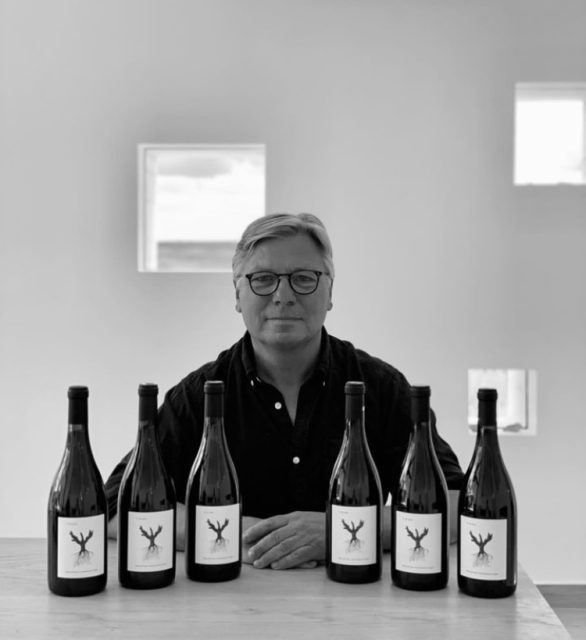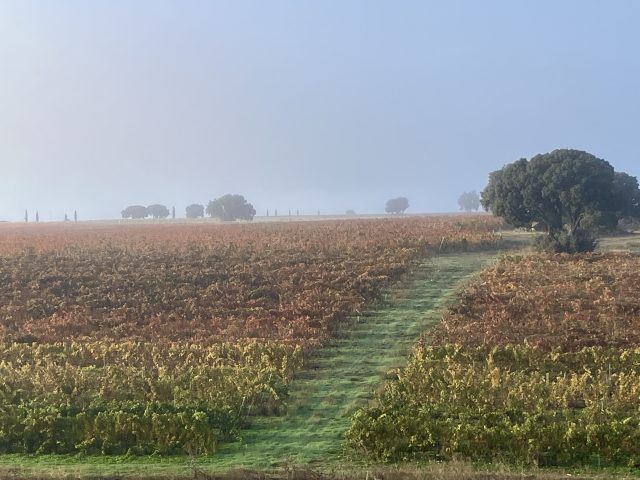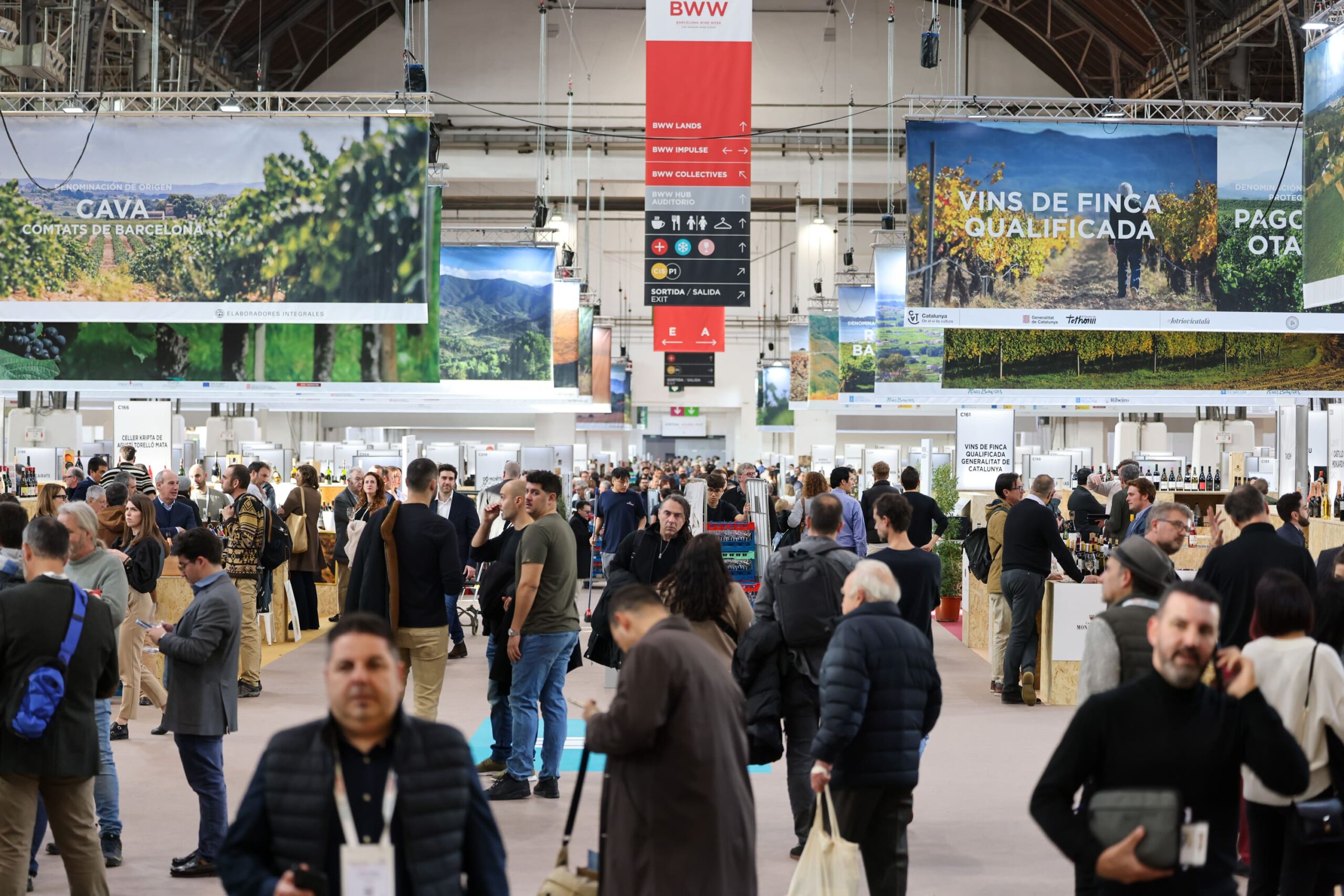Peter Sisseck ‘appalled’ by global rise of mechanical harvesting
The Pingus winemaker rails against automated harvest work, telling db he is “totally appalled” by the number of grapes being picked and sorted by machine today. Sarah Neish reports.

“It’s absolute bullshit!” declared Peter Sisseck, who has steered Pingus towards the stratospheric success it enjoys today, since the icon wine’s first vintage release in 1995.
If successful winemaking is “all up to the scrutiny in the cellar,” he told a small group of journalists visiting Ribera del Duero last week, “then I find it [using machines] extremely problematic. This year there were many vineyards with rotten grapes, so if you just put them through a machine you can’t see them. Here, we have small grapes and we do everything by hand.”
He went on to say that he finds it “highly offensive” that Pingus wines are thought of “as the same” as mechanically harvested expressions.
“If wines are made by machine then I think it should go on the label and the wines should be cheaper. It’s absolute bullshit… it can never be better, but everyone is doing it because it’s cheaper. So fucking put it on the label and take 10% off the price. Why is it impossible for everyone else? We manage it.”
Pingus harvest
Indeed, the 2024 harvest of Pingus’ 40ha limestone vineyard was completed entirely by hand, starting on 11 September and winding up on the 18th, with the vintage characterised by one key descriptor – wet.
“I’ve been here for 33 years and we’ve never had so much rain, almost Bordeaux levels of rain,” Sisseck said of 2024. “We had frost in the spring, and hail. Throughout the year there were issues.”
It’s worth noting that during last year’s vintage across Ribera del Duero hand-harvesting increased to 72.1% of the total area, according to data compiled by the DO, which showed in the quality of the wines produced. Sisseck may have been referring to a global, rather than regional, rise in mechanised harvesting.
Scientist first
In the eternal debate of whether winemaking is a science or an art, Sisseck is a scientist first. His scrupulously systematic approach was highlighted to the drinks business by one conversation in particular regarding an in-depth study he is carrying out into how wines from neighbouring Spanish region Rioja have stood up over time.
“When you compare some of the great Rioja wines from the 1920s and 1930s with wines from Bordeaux, the Rioja wines seem much more stable over time than Bordeaux,” he said. “I’m studying it because I find it very intriguing. Those with a splash of Grenache have aged better than pure Tempranillo.”
However, Sisseck said he is frustrated that when these historical winemakers from Rioja were recording their wines, neither their notes nor the composition of their blends were consistent, making it impossible to compare like for like between vintages. This clearly needles him.
In a similar vein, he is fixated on why a specific anomaly occurred in his cellar for the first time this year, where his very small tanks of Pingus became hotter than usual. “Thermodynamically, I don’t know how it has happened, but the sugar has spread more heat. It’s a peculiar thing. For the first time I wanted to be able to cool the tanks,” he said.
The alcohol in Pingus 2023 was 13.8% but due to the aforementioned issue “this year was slightly above that, which was annoying.”
Sisseck has now tasked one of his winemaking team with finding “a tube to sort the problem”, and when db asks in jest whether solving the issue will be that team member’s sole job for the next 12 months, he smiles knowingly.

Given Sisseck’s appreciation for consistency one could be mistaken for thinking that using technology that treats grapes identically year after year, crate after crate, might on occasion be preferable – if only for the purpose of archiving, documenting and understanding changes to his wine over time. He strongly refutes this.
“Pingus has evolved because everything has changed. The climate has changed,” he said. “If you stick rigidly to your formula you will never make a great wine.”
For exactly this reason, in 2021 Sisseck instigated “the single biggest change” he has made yet in his vineyard.
Partner Content
“We no longer chop the vines,” he said. “I’ve been involved in wine for 40 years and I was completely ignorant, I never realised that chopping the vine stressed it so much.”
Now, in the absence of trellising, Pingus vines grow up to 2.5 metres and “to stop them falling over, we roll them”.
“It’s just phenomenally interesting. It allows us to harvest much earlier, and it seems like the vine is adapting to its own circumstances,” he said. “It’s a hell of a lot of man work but I really think it’s worth it.”
Sisseck is also able to keep an eagle eye on his vines via a live video feed of the vineyard streamed directly into Pingus’ cellar.
Privileged position
Returning to the matter of hand-picked and manually sorted and selected wines versus mechanised harvesting, Sisseck acknowledged that his wines already command an ultra-premium price.
“I know I’m in a privileged position because my wines sell for a good price,” he said. “But the people who harvest by machine and still try to sell at the same price as everyone else, that’s cheating.”
Not only this, but the wine “loses its personality and becomes a product”.
Pingus is all pre-sold, with bottle prices reaching around £634 before taxes for Pingus, £77 before tax for second wine Flor de Pingus, and £29 before tax for PSI.
And while Sisseck bemoans the fact that wine has become “an industry”, he concedes that it’s an unavoidable reality.
“We all love the image of the old farmer with three barrels in a musty cellar but you need workers, and they need holiday days and all sorts of rights, which is exactly as it should be, but it costs money, so you have to grow in size. We currently have 48 people working for us.”
Pyramid system
Sisseck is far from resistant to change. In fact, he is often driving it.
As one possible solution to the issue of wines from Ribera del Duero being classified as the same, regardless of whether they are hand-harvested or mechanised, he proposes a Bordeaux-style pyramid system (the DO’s current model focuses on age – Crianza, Reserva, Gran Reserva etc).
“It’s becoming increasingly more schizophrenic the way people are harvesting in Ribera, so why should the wines be marketed as one big unit?” Sisseck challenged. “I think we should sub-divide into single vineyard wines, village wines and regional wines.”
In the case of the Pingus wine portfolio, he explained, “Pingus would be a single vineyard, Flor de Pingus a village wine and PSI a regional wine.”
According to the Pingus winemaker, “you make wine forward and understand it backwards. It often takes 20 years to understand what you were doing to move it forward. The day I say ‘now I’ve got it!’ is the day I retire.”
Related news
Tim Atkin MW curates sixth Ribera del Duero Selections in London
Ribera del Duero joins WOA as newest member
Ribera del Duero challenges 'out of date' perceptions in UK market




